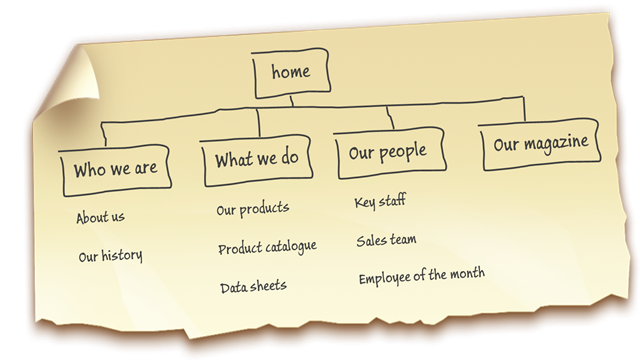This article is all about preparation. It’s about the thinking and planning you need to do if you’re going to successfully build your wonderful, unique and striking website on the SharePoint platform.
I’ve been helping customers implement SharePoint solutions for quite a while. Life gets interesting when those customers want to use SharePoint to host their public website or an intranet of published content. SharePoint is a great platform with a host of powerful features that make it a solid choice for large or complex websites, sites that have to deal with large volumes of traffic or simply sites that need real business processes wrapped around the publishing model. Much of my time in these scenarios is spent helping the customer prepare and plan, and I’d like to share some of my experience.
We’ve planned the site…

How many times do you visit the customer and they greet you with an enthusiastic ‘We’ve planned the site and documented it for you’? I get twitchy when I hear that, because it usually involves me being handed a piece of paper that looks like the picture above. That would be great if it was a starting point, but many times the customer genuinely believes that’s all they need to tell me and the creative agency, and from that tiny post-it note our creative minds will issue forth the next great site on the web.
SharePoint rewards attention to detail
You can’t treat SharePoint like an old web server and expect to get away with it. Treat a web site as a vague collection of folders with pages in that present content of some kind to the reader and you will quickly find yourself in a pit of despair. There are four areas that demand your attention – attend to these with diligence and the technical solutions will be much easier to determine.
Before you start, read Don’t make me think by Steve Krug and The Elements of Content Strategy by Erin Kissane. Both are quick reads that will help you immeasurably.
Content Strategy
Content Strategy is all about identifying what content you have, describing it, identifying who owns it and what its lifecycle is. It’s about discerning the difference between a product datasheet, press release, case study and staff biography. In SharePoint terms, it’s all about content types. What information do we store and how? What columns constitute a press release, and is it based on an article page or an item?
I find that full-service creative agencies that are used to writing copy, be it for print or the web will understand this already. Creative agencies that are more focused on visual design, be it for the web or otherwise tend to struggle with the concepts of content strategy. Once you’ve got them on board, however, their lives are much easier as well: Now we know that we have those four kinds of content then the creative agency can choose to design unique ways to display them.
Design
Knowing what the different kinds of content are will invariably help the creative guys. Now they know that they have to design ways to present each of the different kinds of content – a product page will look very different from the Chief Exec’s Blog. This will help you to answer SharePoint questions like how many masterpages and page layouts and will start to guide your thinking in terms of site structure.
User Experience
Not only do we want to know what the site looks like, we need to think about how users will interact with it. Do we want to use clever icons for navigation? Do we need to present content based on what we know about the user – age, gender, role, etc? We will almost certainly need to build something bespoke to deliver the user experience which means we need requirements so put plenty of detail into describing how things will be expected to work.
Information Architecture
There are some great books on IA out there. SharePoint places additional constraints on projects though: Perhaps our security needs mean that we must create separate site collections for content. Maybe we want radically different design for certain content which means different masterpages and separate sites. Certainly we should avoid simply pouring all our content into one large pot, but if we need to aggregate items on our homepage what implications does that have on our structure?
Measure twice, cut once
If all the steps above sound like a lot of planning then you’d be correct. However, convincing the customer to pay for a planning phase up front will save everyone time and money later. It’s important to make sure that the creative agency understands that the planning phase is critical to them as well – why rush off and design something beautiful when any of those four elements above may throw the whole design into disarray?
The SharePoint Solution
Each of the four areas influences one another and each in turn influences your SharePoint solution design. Technical and budgetary constraints in this area will undoubtedly cause you to revise your plans, but without the information gathered in those four areas of planning you won’t have enough detail to accurately specify and estimate the project, let alone deliver it successfully. In order to deliver, we as practitioners need to understand those four key areas, especially if our customers don’t.
Useful Reading
Books you may find useful when tackling those four planning areas:
- Don’t make me think – Steve Krug
- The Elements of Content Strategy – Erin Kissane
- The Elements of User Experience: User-Centered Design for the Web – Jesse James Garrett
- Information Architecture for the World Wide Web: Designing Large-Scale Web Sites – Peter Morville & Louis Rosenfeld